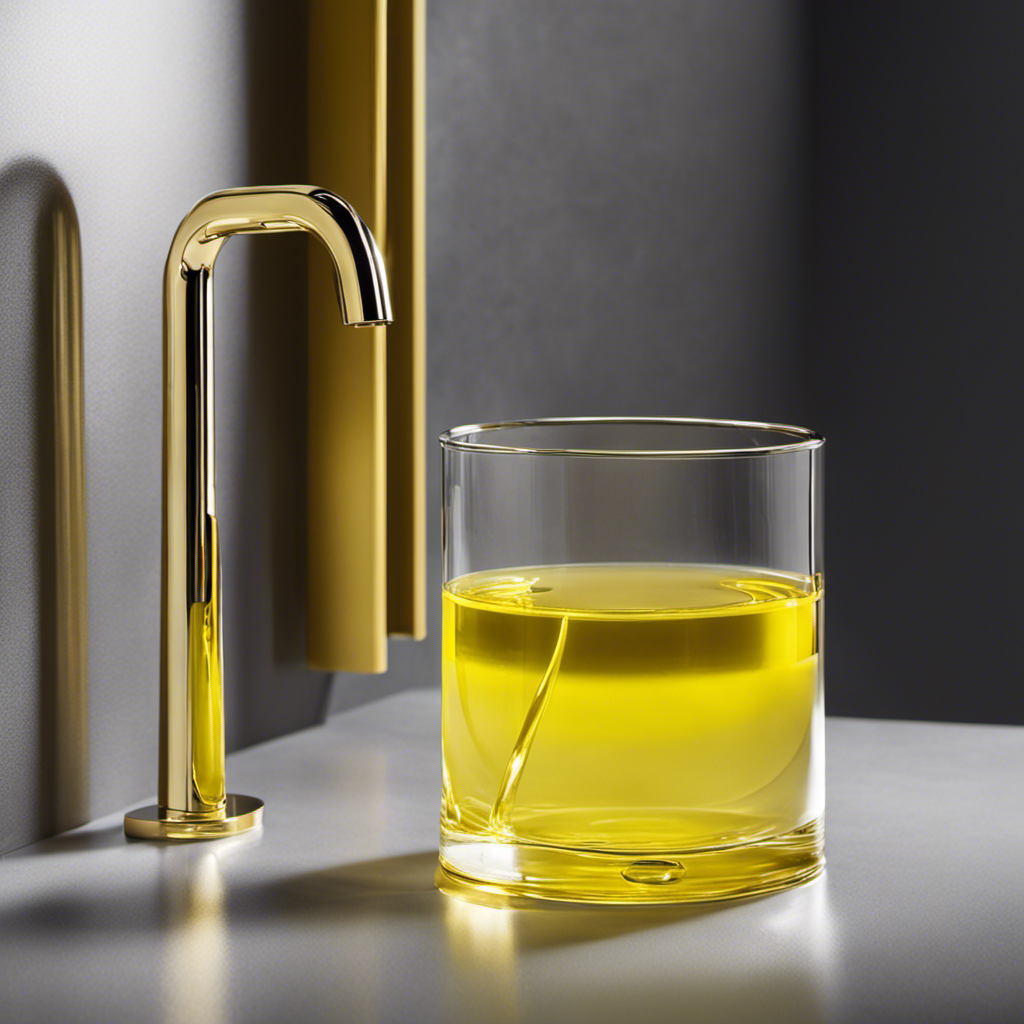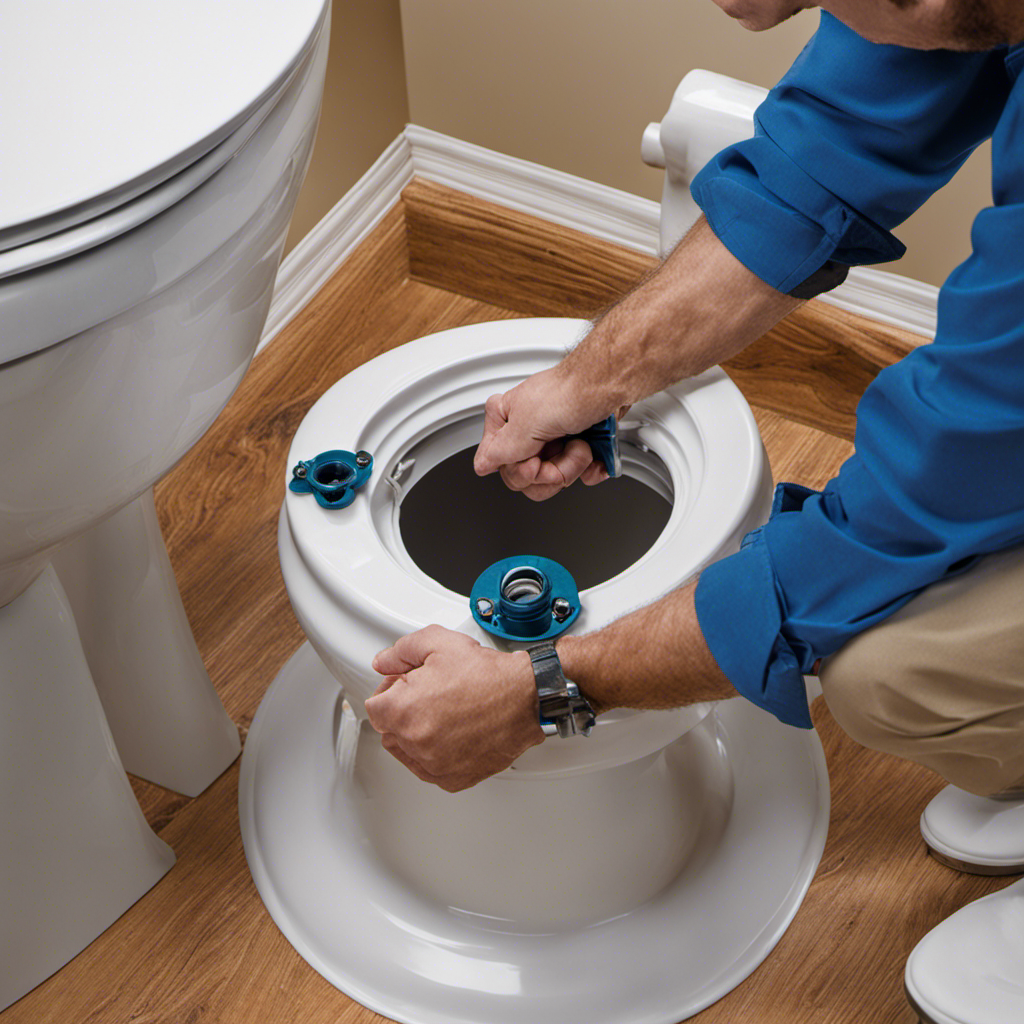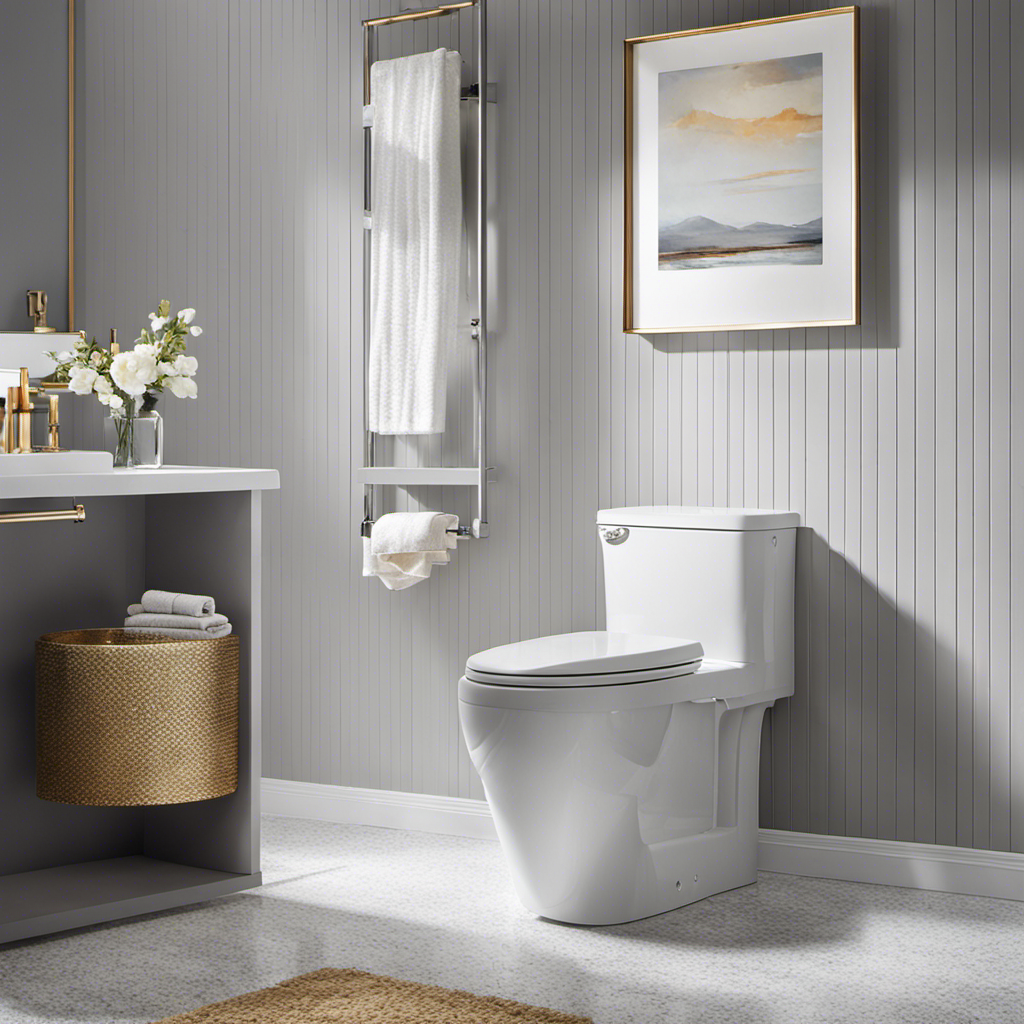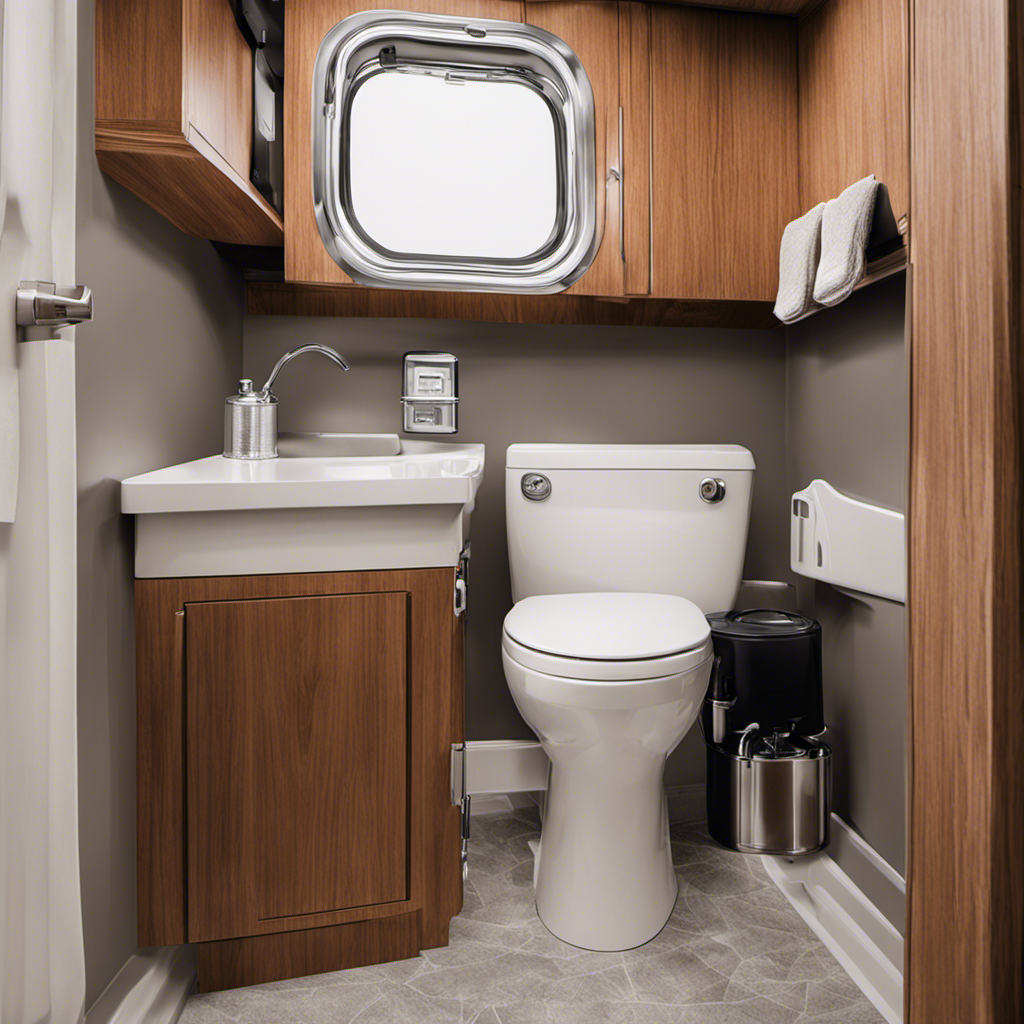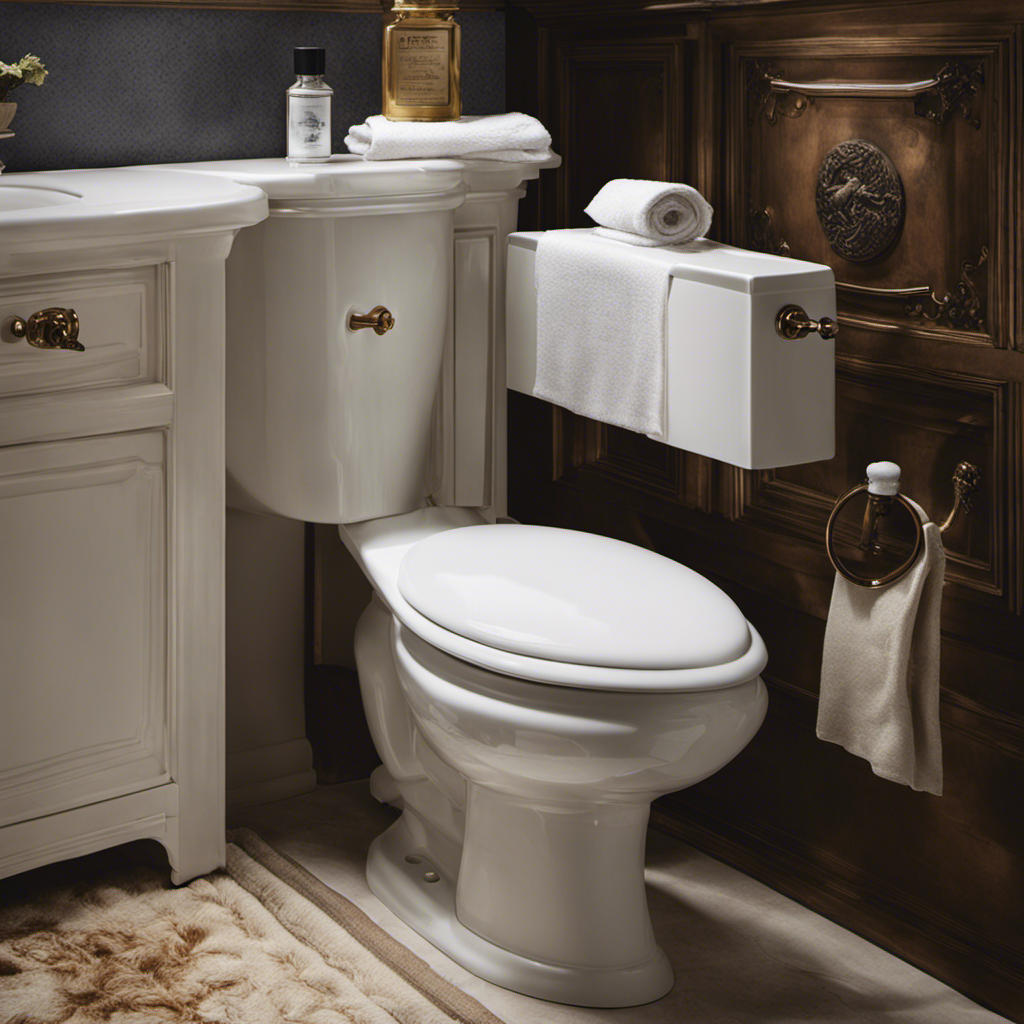Yellow toilet water can be an unsightly and concerning issue for many homeowners. Understanding the causes and finding effective solutions is crucial in maintaining a clean and hygienic bathroom environment.
Hard water, iron deposits, rusting pipes, and contaminants are common culprits behind this problem. However, there are steps that can be taken to address the issue.
By cleaning mineral and rust buildup, installing water softeners, and regularly maintaining the flush, one can restore the toilet water to its natural color.
Additionally, it is important to be aware of the potential health hazards associated with consuming yellow water and take appropriate measures to ensure safe drinking water.
Key Takeaways
- Hard water and the presence of minerals like calcium and magnesium reacting with rust can cause yellow toilet water.
- Iron substances in the water can also lead to yellowish toilet water.
- Bacterial reactions in stagnant or contaminated water can turn it yellow.
- Using cleaning solutions, scrubbing off black stains, cleaning bolts and pipes, and installing a water softener can help fix the issue of yellow toilet water.
Common Causes of Yellow Toilet Water
The common causes of yellow toilet water include:
-
Hard water: Hard water, which contains high levels of minerals like calcium and magnesium, can react with rust and result in yellowish toilet water.
-
Presence of iron substances: The impact of iron in water can also lead to a yellow color. When bolts or pipes rust and come into contact with hard water, a chemical reaction occurs, causing the water to turn yellow.
-
Rusting bolts or pipes: Rusting bolts or pipes can also contribute to yellow toilet water when they come into contact with hard water.
-
Standing or contaminated water: Standing or contaminated water, which may contain bacteria, can change the color of the toilet water.
-
Use of water softeners: Water softeners, although designed to remove minerals, can have the unintended consequence of causing yellow toilet water.
It is important to address these causes to restore the water to its natural color.
How to Fix Yellow Toilet Water Issue
To fix the issue of yellow toilet water, one can clean the minerals from the toilet water by scrubbing off black stains and using a liquid cleaning solution. Additionally, there are several DIY remedies and preventive measures that can be taken to maintain clean toilet water.
One effective way to prevent yellow toilet water is to regularly clean the flush to prevent standing water and bacterial growth. This can be done by using a toilet cleaner liquid designed to kill bacteria and viruses. These cleaners not only remove unwanted odors but also prevent yellow water in the toilet.
Another preventive measure is to install a water softener to eliminate the effects of hard water. This will help prevent the minerals from reacting with rust and causing yellowish water.
Lastly, it is important to contact the local water service board to inquire about any contamination or repair work that may be causing yellow water. They can provide valuable information about the water supply lines and whether they are mixing with contaminated water, leading to yellow or brown water in the toilet.
Contacting the Water Service Board
Contacting the local water service board allows individuals to inquire about any contamination or repair work that may be causing discoloration in the toilet water. The water service board can provide information on the possible causes and solutions for yellow toilet water.
When reaching out to the water service board, individuals can expect a prompt response time to address their concerns. It is important to have the contact information of the water service board readily available, as this will ensure a quick and efficient resolution to the issue.
Using a Toilet Cleaner
Using a toilet cleaner helps eliminate bacteria and viruses, preventing the occurrence of yellow water in the toilet. Toilet cleaners are designed to effectively remove unwanted odors and maintain cleanliness. When choosing a toilet cleaner, it is important to consider its effectiveness in killing bacteria and viruses. Here are three of the best toilet cleaner brands that are known for their efficiency:
| Brand | Description |
|---|---|
| Clorox | Clorox toilet cleaners are powerful and effective in removing tough stains and killing germs. |
| Lysol | Lysol offers a range of toilet cleaners that are known for their disinfecting and deodorizing properties. |
| Scrubbing Bubbles | Scrubbing Bubbles toilet cleaners are known for their foaming action, which helps to remove stains and kill bacteria. |
Health Hazards of Yellow Water
Drinking yellow water can pose health hazards due to the presence of bacteria, viruses, and potentially harmful elements and metals. The potential contaminants in yellow water include high concentrations of bacteria, viruses, heavy elements like calcium and magnesium, and potentially harmful metals like manganese. These contaminants can cause various health issues, such as stomach disorders, if consumed.
It is recommended to use bottled water for drinking or install a water purification system to ensure the safety of the water.
Additionally, yellow water can also have detrimental effects on plumbing systems. The presence of bacteria and viruses can lead to clogs and corrosion, while the heavy elements and metals can cause damage to pipes and fittings.
Regular maintenance and water testing can help identify and address these issues to prevent further damage.
Conclusion
In conclusion, yellow toilet water can be caused by a variety of factors. These factors include hard water, iron presence, rusting bolts or pipes, stagnant or contaminated water, and the use of water softeners.
To tackle this issue, there are several steps that can be taken. One can clean the toilet water by removing minerals and rust. Installing a water softener can also help. Regularly cleaning the flush and replacing affected pipe fittings are other effective measures.
It is crucial to reach out to the local water service board to address any contamination or repair work needed. They can provide guidance and assistance in resolving the issue.
Additionally, using a toilet cleaner can help eliminate bacteria and prevent unpleasant odors. However, it is important to note that consuming yellow water can lead to stomach disorders. Therefore, it is advisable to use bottled water or install a water purification system for drinking purposes.
Water testing kits can provide insights into the cleanliness and safety of the water. Regular testing can help ensure that the water is safe for use.
Safeguard your health by taking appropriate measures to combat yellow toilet water. By addressing the underlying causes and implementing preventive measures, you can maintain clean and safe toilet water.
